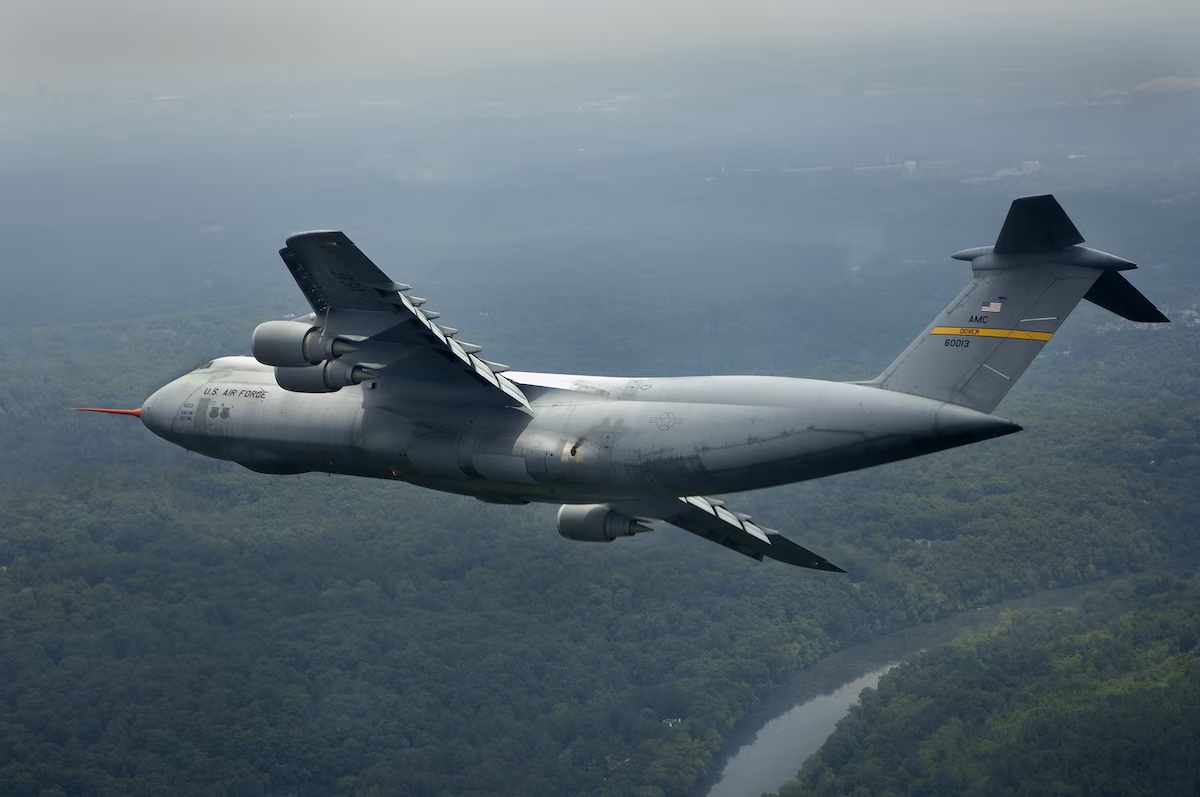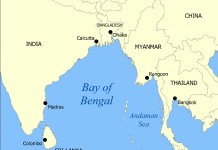The largest aircraft in the US Air Force (USAF) arsenal, the C-5M Super Galaxy, is visiting an air base in New Zealand to deliver ‘special cargo’.
New Zealand ordered five C-130J Super Hercules aircraft in 2020 to replace its 1960s-era C-130H Hercules fleet that had been the mainstay of the Royal New Zealand Air Force (RNZAF) for decades.
The purchase of Super Hercules has been hailed as the most significant acquisition for an air force that does not operate a single fighter jet.
Taking the delivery of the first of these aircraft last year, Chief of Defence Force Air Marshal Tony Davies said, “We’ve taken a huge step forward in our tactical air transport capability. The additional capabilities the new C-130J fleet brings will open up expanded roles for the aircraft to meet the needs of New Zealand and our partners.” All five aircraft have since been delivered by the manufacturer, Lockheed Martin.
Besides the transport aircraft, New Zealand also ordered a C-130 Super Hercules flight simulator as part of the wider Air Mobility Capability (FAMC) program, which has provision for spare parts and initial crew training.
The C-5M Super Galaxy arrived at Auckland’s Whenuapai Air Base on August 20, 2025, to deliver components for the new C-130J Hercules simulator, as reported by local Kiwi media.
The simulator is designed to enhance training efficiency, reduce operational costs, and improve safety by shifting much of the training from live aircraft to a virtual environment.
C5 on approach to NZWP, as captured on webcam from Gulf Harbour on Whangaparaoa Peninsula pic.twitter.com/zfQyNkZOsW
— AvScanNZ 🇳🇿 (@NZ_Trav) August 20, 2025
The device is a life-sized model of the C-130J-30 cockpit outfitted with sophisticated software, graphics, and motion systems to replicate authentic flying conditions. It is a full-mission, full-motion C-130J Weapon Systems Trainer (WST). It allows high-fidelity replication of the aircraft’s systems, allowing for training in various scenarios such as takeoffs, landings, cargo operations, and tactical maneuvers.
New Zealand has reportedly constructed a dedicated building at RNZAF Base Auckland Whenuapai to house the simulator. The first New Zealand-based training program will start in early 2026.
“Under the J-model contract, we’d be aiming to achieve as much training as possible in the simulator,” Scott explained earlier. This will aid the full readiness and official integration of the C-130J. You can read about the capabilities of the C-130J here.
Though the capabilities of the C-130J, in service with many countries globally, have been discussed frequently, it is the carrier C-5M Super Galaxy that warrants a special mention.
Being the largest aircraft in the USAF as well as in the world currently, the C-5M Super Galaxy was perhaps the best suited for transporting the large components of the C-130J simulator, such as a life-sized cockpit replica, motion systems, and advanced electronics. These are bulky, heavy, and potentially too large for a usual cargo aircraft.

C-5M Super Galaxy Aircraft
The C-5M Super Galaxy is a strategic transport aircraft and is the largest in the USAF’s inventory. It holds the distinction of being one of the largest aircraft in the world alongside the Antonov An-124 Ruslan and the An-225 Mriya, the latter destroyed in the Russian invasion of Ukraine in February 2022.
The C-5 Galaxy was developed by Lockheed Martin in the 1960s under the USAF’s Cargo Experimental-Heavy Logistics System (CX-HLS) program to meet the need for a massive airlifter capable of carrying outsized cargo, such as tanks and helicopters, over long distances. It replaced older aircraft like the C-133 Cargomaster and complemented the smaller C-141 Starlifter.
The C-5 Galaxy has been upgraded to the sophisticated C-5M Super Galaxy variant. It is 247.1 feet long, has a wingspan of 222.7 feet, and a height of 65.1 feet—the primary mission of this aircraft is to transport cargo and personnel for the Department of Defense.
The gigantic C-5M Super Galaxy is powered by four General Electric F-138-GE100 engines, each engine giving a thrust of 51,250 pounds. It has five sets of landing gear and 28 wheels. The C-5M can take off and land on comparatively short runways and transport large loads across intercontinental distances.

The aircraft allows the ground staff to load and unload cargo from both ends at the same time by opening the nose and aft doors, which speeds up cargo transfers.
In comparison, the smaller tactical transport aircraft like the C-130J or commercial freighters may lack the specialized cargo handling systems needed for the transport of sophisticated military equipment.
This mammoth aircraft can carry virtually all U.S. Army combat equipment, including outsized items like M1 Abrams tanks, Chinook helicopters, or bridge sections. The C-5M has a proven track record of delivering oversized military equipment globally, including C-130 components, vehicles, and even space shuttle parts historically. In fact, the aircraft’s adaptability is also reflected in science fiction mythology, as it is the only vehicle in the well-known Stargate SG-1 series that can transport the Stargate.
https://twitter.com/Aviation_Intel/status/1952803464943419719
Other US strategic airlifters, like the C-17, have smaller cargo bays and lower payload limits, making the C-5M better suited for large cargo. For comparison, C-17 Globemaster III has a payload capacity of 77,519 kilograms, as compared to the 127,460 kilograms payload capacity of the C-5M Super Galaxy.
The Super Galaxy has full-width drive-on ramps at each end, which allow transportation of double rows of vehicles aboard the aircraft. It ensures a stable transit with the help of its state-of-the-art glass cockpit, which is equipped with digital displays, GPS, weather radar, and sophisticated navigation systems that comply with international aviation regulations.
Without the need for aerial refuelling, the C-5M can travel 2,150 nautical miles, offload, and then fly to a second base 500 nautical miles from its first destination. “With aerial refuelling, the aircraft’s range is limited only by crew endurance,” states the US Air Force. Additionally, it has a maintenance diagnostics system that can record and analyze data from more than 7,000 test points, reducing maintenance and repair time.
Additionally, it is equipped with a host of defensive systems, including missile warning systems, infrared countermeasures, and chaff/flare dispensers for operations in contested environments, making it ideal for conducting airlifting and equipment delivery operations during combat.
Earlier, it was used for the delivery of military equipment to Ukraine and NATO allies amid ongoing tensions with Russia.
There are about 52 C-5M Super Galaxy aircraft in active service as of 2025. The aircraft is expected to remain in service until at least 2040, supported by ongoing maintenance and upgrades. As of now, no direct replacement is in development.
- Contact the author at sakshi.tiwari9555 (at) gmail.com
- Follow EurAsian Times on Google News




